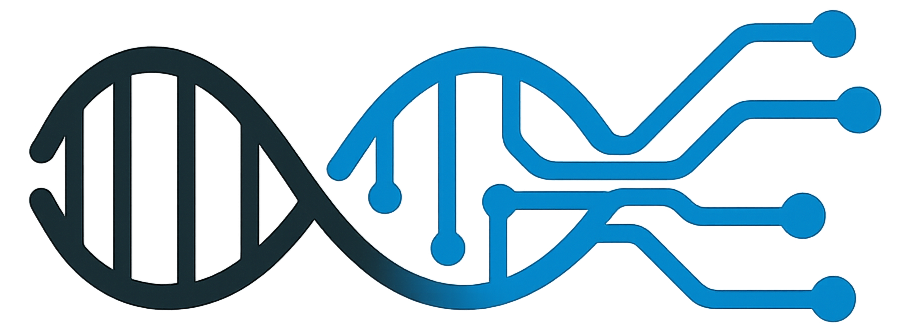The Dawn of Abundance: How AGI Will Transform the Global Economy
Introduction: Standing on the Edge of Something Big
There are moments in history that change everything—moments when our tools evolve so radically that they transform not just how we live, but what it means to be human. Fire. The printing press. Electricity. The internet.
We may be approaching another such moment. It’s called AGI—Artificial General Intelligence—and unlike the AIs we know today (which are really more like glorified spreadsheet macros with some creativity), AGI refers to machines that can think, reason, and learn across domains like we do. Maybe better.
Demis Hassabis, co-founder and CEO of Google DeepMind, recently said in a Wired interview that AGI could arrive within 5–10 years. His words weren’t hype. They were matter-of-fact. He’s not just speculating—he’s building it.
So... what happens when we cross that threshold?
Part 1: A Quick Look in the Rearview Mirror
Before we talk about AGI, we need to look at how we got here.
Every major economic leap—agriculture, steam engines, electricity, computing—has been driven by a new way to harness energy or intelligence. Each time, productivity soared, labor patterns shifted, and society reinvented itself. The Industrial Revolution automated muscle; the Digital Revolution automated memory and arithmetic.
AGI promises to automate cognition itself—the most foundational economic resource of all.
If history’s any guide, it won’t be a smooth ride. But it could be the most transformative yet.
Part 2: Wait, What Exactly Is AGI?
We toss around terms like AI, but most of what we call “AI” today is narrow AI (what researchers call ANI). It can beat you at chess, drive a car, or write a blog post—but only in a very specific context.
AGI is different. It’s not just trained on patterns—it understands. It can reason across tasks, learn new domains without being retrained, and even improve itself.
Tim Urban, author of the fantastic Wait But Why series on AI, frames it this way:
ANI = specialized idiot savants
AGI = human-level intelligence
ASI (Artificial Superintelligence) = what happens when machines get better than all of us. Combined.
And once we reach AGI, the transition to ASI might be fast. Very fast.
Part 3: How Will AGI Impact the Economy?
⚙️ Labor
Let’s rip the Band-Aid off: many jobs will disappear.
Not just factory work or trucking, but white-collar jobs—lawyers, doctors, teachers, designers. If a machine can do it faster, cheaper, and better, the market will shift.
But that’s only half the story.
Hassabis believes AGI will also unlock new jobs—roles in science, engineering, ethics, and coordination that don’t even exist yet. Think of it like electricity: it killed the lamplighter, but created the entire modern world.
🧪 Productivity and Discovery
AGI won’t just replace jobs—it will accelerate discovery. Hassabis’s team has already created AI that folds proteins (AlphaFold), simulates quantum physics, and hypothesizes scientific theories.
Imagine every researcher in the world having an assistant smarter than Einstein, faster than Google, and as tireless as... well, a computer.
This isn't just about GDP growth. It's about unlocking medical cures, solving climate change, and engineering materials we can't even name yet.
💰 Economics of Abundance
If AGI can automate thinking, design, production, and logistics, we start approaching a world where most goods and services are abundant—produced at near-zero marginal cost.
This changes everything. In traditional economics, scarcity defines value. What happens when scarcity dissolves?
Tim Urban calls this a "post-scarcity economy." It sounds utopian. But without new systems of ownership, access, and equity, it could just as easily become a techno-feudal dystopia.
Part 4: Who Owns the Future?
Let’s be blunt: if AGI is controlled by a handful of corporations or governments, we’re screwed.
Centralized AGI would concentrate power, wealth, and influence at a level history has never seen. Hassabis knows this. That’s why he (and others) advocate for global governance, safety mechanisms, and long-term alignment strategies.
One possible model: open-source AGI that benefits everyone. Another: nationalized research institutes with citizen dividends. Think: public utilities for intelligence.
But getting there will require coordination, transparency, and a shared vision—three things we humans aren’t historically great at.
Part 5: Redefining Work, Wealth, and Worth
Okay, so the machines can do the work. What do we do?
This is the question that haunts economists, philosophers, and parents alike. If jobs aren’t necessary for survival, how do we define purpose? Contribution? Dignity?
AGI gives us a shot at reimagining work—not as a necessity, but as a choice.
Want to explore the arts? Do it.
Want to raise children full-time? Supported.
Want to dedicate your life to astrophysics, theology, or building sandcastles? Why not?
But this requires new cultural systems—not just economic ones. Our sense of self is deeply tied to what we do. If AGI disrupts that, we need new stories.
Part 6: Two Possible Futures
Future A: Techno-Feudalism
AGI is owned by the few. Massive wealth gaps open. Human creativity is devalued. Surveillance, control, and disempowerment reign.
Future B: Shared Abundance
AGI is developed with transparency, global safety nets, and open access. People are freed to explore, connect, and create. We redefine progress not as profit, but as flourishing.
Which future we get isn’t up to the machines. It’s up to us.
Conclusion: We Are the Ancestors Now
In his Wired interview, Hassabis says something subtle but profound: AGI isn’t just a technical project—it’s a social, political, and economic one.
We have maybe a decade—if that—to prepare. To design the systems, norms, and policies that will shape life after work, after scarcity, after this era of human-only cognition.
We’re not just users of AGI. We’re its stewards. And its consequences will echo for centuries.
So let’s get it right.

